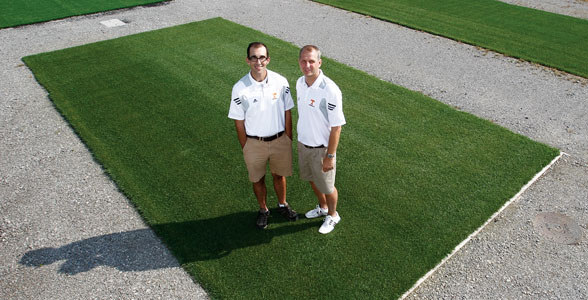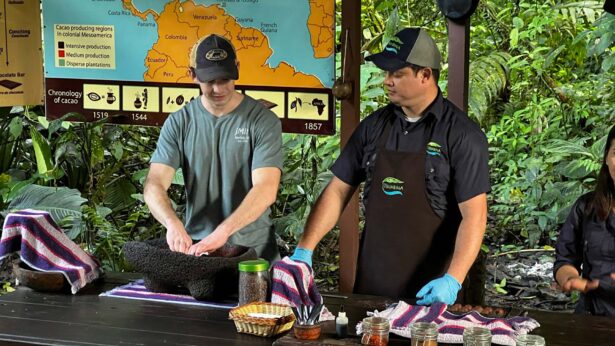By Elizabeth A. Davis
50% of all sports injuries are preventable.From professional stadiums to neighborhood parks, the quality of the real or synthetic turf makes a difference. A poor surface could make an athlete lose her footing or, worse yet, cause an injury. The University of Tennessee has partnered with AstroTurf to study various kinds of grass and synthetic turf surfaces in an effort to prevent injuries and increase athletic performance.
Sixty plots of miniature playing fields are spread like a patchwork quilt in a two-acre field at the UT Institute of Agriculture’s East Tennessee Research and Education Center in Knoxville, a part of the institute’s AgResearch division.
These two acres are the UT Center for Athletic Field Safety, where grass is put to the test. Research co–investigators John Sorochan and Jim Brosnan are leading the studies. The center officially opened in July.
“Injuries are a huge concern in all athletics. The U.S. Centers for Disease Control and Prevention has shown in studies that $49 billion is spent every year in medical and legal expenses due to injuries affecting children under 14,” says Brosnan, assistant professor of turfgrass weed science.
“Studies have shown that 25 percent of injuries that occur in athletics are potentially related to the conditions of the playing surface, while others have shown 50 percent of all sports injuries are preventable. We need to learn more about how athletes interact with playing surfaces.”
Researchers are studying how the turf affects running, jumping, and other athletic movements, and vice versa. Is one kind of surface wearing out too fast? Is the soil or sand base providing enough cushion or too much? How should the turf be maintained to keep it performing at the highest level?
“There are so many athletic fields—about 70,000—in the United States. Most of them are municipal parks or public-school facilities and are maintained by coaches or others with little to no training on how to take care of them,” says Sorochan, associate professor of turfgrass science. “We want to use this research to provide them with options and step-by-step tips on installing and maintaining the most appropriate surfaces for the climate and use.”
For more information, visit the Tennessee Turfgrass website at turf.tennessee.edu.



